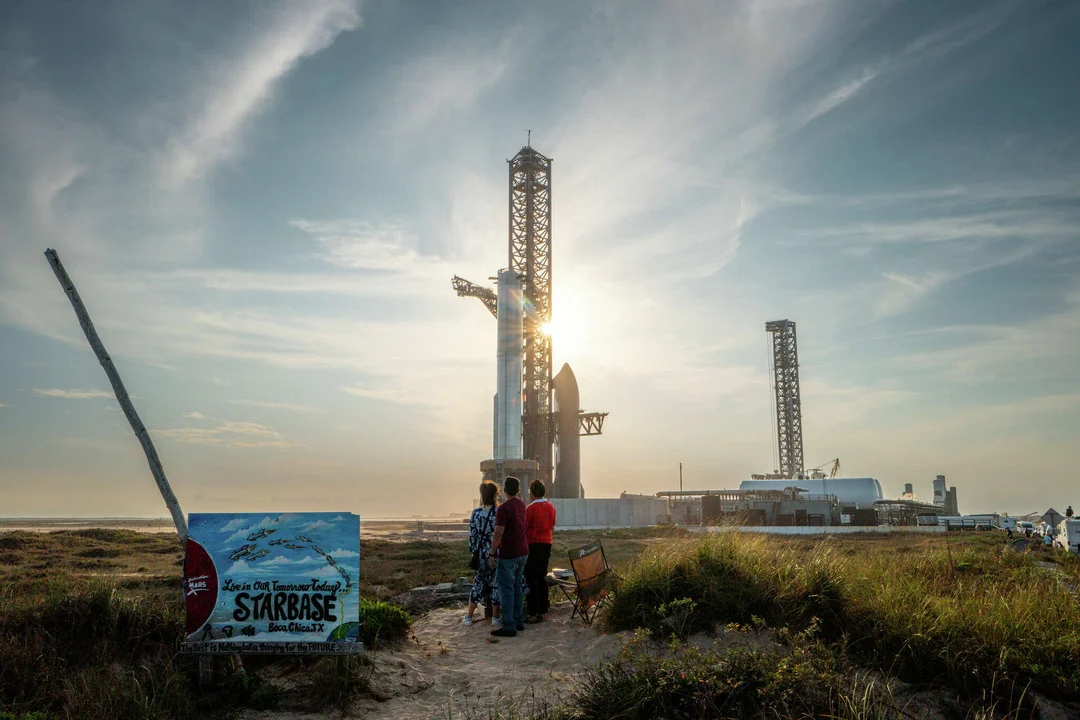
SpaceX’s Starship Launch Cadence Sparks Controversy: Is Rapid Development Worth the Environmental Cost?
SpaceX's ambitious plans to launch its Starship rocket as many as 25 times a year from its South Texas facility are generating both excitement and concern. While the Federal Aviation Administration (FAA) has given the green light, citing no significant environmental impact, local residents and environmental groups are raising serious questions about the potential consequences of such a rapid launch cadence.
The FAA's decision, detailed in a 53-page document, allows SpaceX to significantly increase its launch and landing operations at Starbase near Brownsville, Texas. This is a major win for Elon Musk and his company, which envisions Starship as the key to making Mars settlement economically viable. "After reviewing and analyzing this Final Tiered EA, including all available data and information on existing conditions and potential impacts, the FAA has determined that modifying SpaceX’s vehicle operator license supporting the increased launch and landing cadence of the Starship/Super Heavy launch vehicle would not significantly impact the quality of the human environment within the meaning of NEPA," the FAA wrote.

However, the decision hasn't been met with universal approval. Moriba Jah, a professor at the University of Texas at Austin, believes the FAA's assessment "wasn't good enough" and expressed concern about accelerating launches without fully understanding the environmental impact. He advocates for a more inclusive approach, involving diverse voices and careful monitoring of the environment's response.
Local communities are also worried. Christopher Basaldú, a member of the South Texas Environmental Justice Network, criticized the lack of consultation with the Carrizo Comecrudo Tribal Nation, who live near the Boca Chica launch site. He argues that SpaceX has been polluting the environment for years, and the FAA's assessment is a disservice to the community and the environment. "The FAA must send SpaceX back to 'square one' and demand SpaceX complete a new and full Environmental Impact Statement," Basaldú said. "SpaceX has been polluting the land and the water and lying about it for years. For the FAA to pretend that this has 'no significant environmental impact' is ludicrous."
Past launches underscore these concerns. A recent study in *Nature* highlighted how rocket launches can threaten global biodiversity conservation, with many launch sites located near protected areas. In Texas, a 2023 Starship test flight sparked a fire at Boca Chica State Park, damaging shorebird nests and potentially impacting local wildlife, including 1,200 plants, 300 butterflies, and 700 vertebrates. Furthermore, concerns extend beyond Texas, with worries about Starship splashdowns affecting humpback whale migration routes near Hawaii.
Even near successful launches have raised eyebrows. Following a January Starship test flight where the rocket exploded, Elon Musk infamously quipped, "success is uncertain, but entertainment is guaranteed." Jah countered, "People in Turks and Caicos, when they saw rocket pieces landing in the ocean, they weren't considering that as entertainment, certainly the wildlife wouldn't either."
Despite these concerns, SpaceX's presence has been a boon to the Cameron County economy, generating over $800 million in capital income and indirect business taxes. The company is also investing heavily in infrastructure, including a STEM school and community center. This economic benefit often clashes with environmental protection concerns, creating a complex dynamic within the community.
The FAA's decision has also strained the relationship between Musk and the agency. Musk previously expressed frustration with the FAA's regulations, even threatening legal action and calling for "radical reform." Despite this tension, the agency has ultimately paved the way for SpaceX to accelerate its Starship program.
The increased launch cadence raises fundamental questions about whether the pursuit of rapid space exploration justifies the potential environmental risks. Where do we draw the line between technological advancement and responsible stewardship of our planet? Is the potential for Mars settlement worth the immediate environmental impact? Leave your thoughts in the comments below.